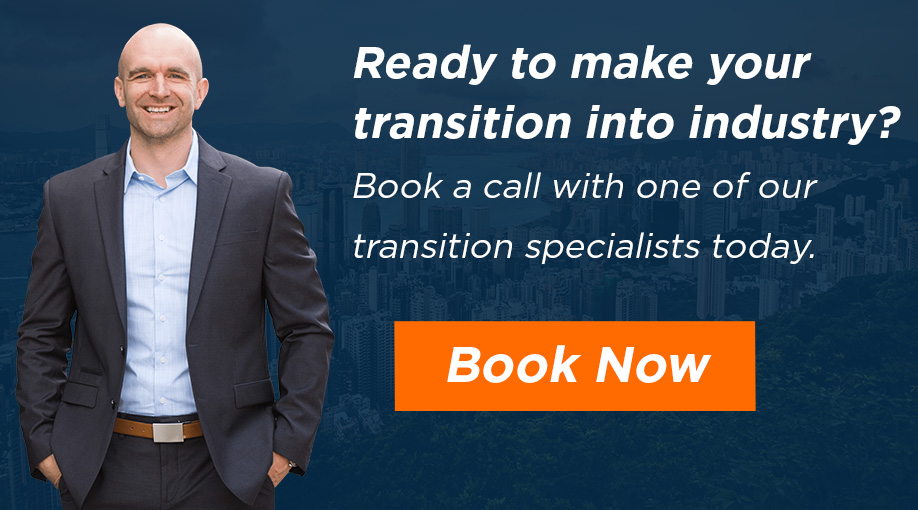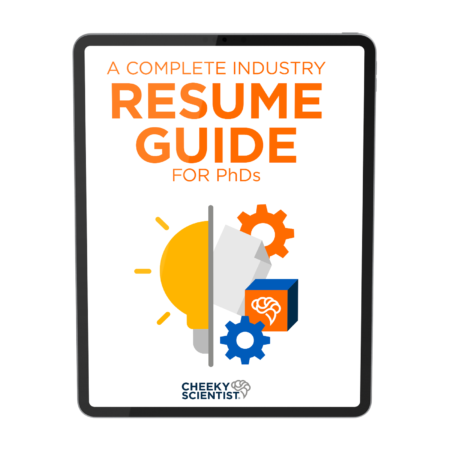I Finally Started Getting Contacted By Employers On LinkedIn When I Updated These 5 Parts Of My LinkedIn Profile

I didn’t think I needed a LinkedIn profile.
I just graduated with a PhD and I had several publications, so it seemed only logical that employers would come seek me out and hire me.
But no one called me.
So I started to apply for positions online.
I thought of course now that these employers know about me they will call me back and bring me in for an interview.
But again, no one called me.
I was stumped and my confidence faltered.
I guess no one wanted to hire me?
Maybe I wasn’t good enough for any of these industry positions?
Perhaps I should just apply for a postdoc, even though I really didn’t want to do one.
Eventually, I became desperate and was so unsure of how to move forward that I decided to seek out help.
I found a mentor and asked them why no one wanted to hire me.
Why did I never hear anything back?
I was shocked when this mentor told me that most likely no one even looked at the resumes that I sent in with my job applications.
“Many positions are filled by referrals and the job posting is just a formality.”
What?
I needed to get a referral to get hired?
I really thought that my PhD would be enough to get me an interview at any company I wanted.
But that was not the reality.
So I started networking.
I created a LinkedIn profile and started joining groups and connecting with industry professionals.
I went to in-person networking events and joined local community organizations.
As soon as I started building my networking, instead of just applying online, I started to progress in my job search.
I started to get real job opportunities, and eventually I was hired into my first industry role – because of the networking I had done.
Why Your Bad LinkedIn Profile Is Preventing You From Getting Hired

LinkedIn is filled with opportunities for you to not only connect with and learn from industry professionals, but to find job openings.
According to LinkedIn, 30,000 companies in the U.S. use LinkedIn to recruit, and over 3 million jobs are posted on LinkedIn in the U.S. every month.
So if you are not seeing opportunities and you are not being contacted by employers, the problem is your profile, not a lack of job openings.
The vast majority of employers are using LinkedIn to screen candidates.
CareerBuilder found that 57% of employers have found information online that caused them not to hire a job candidate.
Are employers looking at your LinkedIn profile and then deciding to trash your resume?
What does your LinkedIn profile convey about you?
LinkedIn is a place that you can take control and paint a professional picture of yourself so that employers see you as the industry professional that you are.
Do not make the mistake of thinking that your LinkedIn profile does not matter.
Your PhD alone is not enough to get you hired.
You must create a job search strategy, and LinkedIn should be a key part of that strategy.
5 Most Important Parts Of Your LinkedIn Profile
Having a professional LinkedIn profile that accurately represents the industry professional you want to be is essential to the success of your job search.
Recruiters and hiring managers are going to be judging you on your LinkedIn profile before they decide to bring you in for an interview.
It deserves your time and effort.
But where should you start?
Where should you focus your efforts to get the most out of your profile?
Here are the 5 most important parts of your LinkedIn profile that you should focus on so that you can start getting noticed by employers on LinkedIn…
1. Keyword-optimized, future-focused headline.
The most heavily weighted part of your LinkedIn profile is your headline.
This is what the LinkedIn algorithm is using to decide if you show up in certain search results or not, so it is incredibly important that you have an appropriate headline.
Many postdocs and PhD students use their academic titles in the LinkedIn headline – this is a waste of space.
If your LinkedIn headline says ‘PhD Candidate,’ ‘Postdoctoral Fellow,’ ‘Graduate Research Associate,’ or anything similar to that you need to change it right now.
Hiring managers and recruiters are not searching for a ‘PhD Candidate’ to fill the job opening they have.
They are searching for the job title that they need to fill, such as ‘Scientist’ or ‘Project Manager.’
If you want to show up in the results for searches like these, you need to put those keywords into your headline.
The keywords that you use will be specific to your situation and the jobs that you are targeting.
You might think that it’s odd for you to put a title that you do not have in your headline, but this is what you need to do to get noticed on LinkedIn.
You need to make your headline future focused.
You need to make your entire LinkedIn profile future facing.
This means thinking about what you want your future job and career to look like and then using that image to write your profile.
Don’t make up experience that you don’t have, but look at your current experience through a different lens.
How did your PhD prepare you for the positions that you want?
What technical and transferable skills did you gain that are important for the roles you are applying for?
Put those key skills into your headline so that LinkedIn knows that your profile should appear in searches that contain those keywords.
2. Professional, smiling profile picture.
People make very, very quick assumptions and judgements when they first view your LinkedIn profile.
Most of these snap judgements are unconscious.
But they are happening.
So, you need to do everything you can to create a LinkedIn profile that gives the viewer a positive first impression.
The biggest thing you can do for this is to have an excellent profile picture.
Your picture should not be of you in the lab or anywhere else unprofessional.
Your picture should not be of you with other people.
Your picture should not be blurry.
Your picture should not be super tiny.
Your picture should not be dark.
You need to have a very professional photo with good lighting where you are smiling.
Each of these things is important, because the first time someone sees your LinkedIn profile they have probably not met you yet.
You need to make your first impression with this static photo.
Wearing professional clothing is important because this will convey authority and competency.
Having good lighting is important because being able to see you clearly conveys trust.
Smiling is important because this conveys likeability.
Employers want to hire competent, trustworthy employees who will get along with their other employees.
You can use your profile picture to set this tone before you have even met someone.
3. Engaging, results-oriented first few lines of your summary.
When someone lands on your LinkedIn profile they will only see the ‘above the fold’ portion of your profile.
‘Above the fold’ refers to the part of the webpage that is visible without scrolling or clicking.
And for your LinkedIn profile this ‘above the fold’ section includes the first 3 lines of your summary.
Your entire LinkedIn summary should be several paragraphs or bullet points long.
As a whole, it should summarize that most relevant achievements that you have made and highlight the tangible results you achieved.
But, the most important part of this summary are the first 3 lines.
Because if these first 3 lines are bad, no one is going to click the ‘read more’ button and no one is going to learn about your accomplishments.
Your summary should be written in a conversational tone, as if you are having a conversation with the person who is reading your profile.
You can use the first person when writing your LinkedIn summary.
The biggest thing to think about when writing these first 3 lines is to be engaging and get the reader to be interested in what you have to say.
It will probably take several iterations before you are happy with your summary.
Keep writing and editing until you have a summary opening that gets the reader’s attention and conveys the incredible value that you will bring to the organization that hires you.
4. Personalized, relevant banner photo.

This is where you can have some creative fun with your LinkedIn profile.
The long horizontal photo that appears at the top of your LinkedIn profile is your banner photo.
LinkedIn provides you with a default photo here that is blue with some white lines on it, but you can, and should, customize this photo.
Some common images to put here include
- image from your research discipline – this works really well if you work in any sort of imaging discipline
- image of the cityscape or landscape of where you live
- image of a hobby you are passionate about
- image with an interesting pattern
- image quote
Whatever you choose to put here make sure that is it professional and that it accurately reflects the personal brand that you are building.
5. Updated profile to include your desired location.
The final item that appears ‘above the fold’ and is every important to LinkedIn’s algorithm is your location.
You should choose a location when editing your LinkedIn profile.
This is true even if you are willing to move or you are looking at multiple locations.
Choose your most desired location and set it as your profile’s location.
When recruiters and hiring managers are searching for job candidates on LinkedIn they are going to be searching for the job title and the location.
If they need to fill a User Experience Researcher position in Montreal, that is exactly what they are going to search: User Experience Researcher Montreal.
If you don’t have Montreal as your location then you won’t appear in the search results.
If you are willing to relocate, you can write that in your headline or in the first 3 lines of your summary.
But it is still important that you select one location as your primary target location.
LinkedIn should be a cornerstone in your job search strategy. It is a place to connect with industry professionals, to learn about industry, and a place to find job leads. But in order to get noticed by employers you must have your LinkedIn profile in order. This means that you should have a keyword-optimized, future-focused headline, a professional, smiling profile picture, an engaging, results oriented first few lines of your summary, a personalized, relevant banner photo and an updated profile to include your desired location. With those items completed on your LinkedIn profile you will start to be contacted by employers.
If you’re ready to start your transition into industry, you can apply to book a free Transition Call with our founder Isaiah Hankel, PhD or one of our Transition Specialists. Apply to book a Transition Call here.

ABOUT CATHERINE SORBARA, PH.D.
Cathy has a PhD in Medical Life Science and Technology and is COO of the Cheeky Scientist Association. Cathy is passionate about science communication including translating science to lay audiences and helping PhDs transition into industry positions. She is Chair of Cambridge AWiSE, a regional network for women in science, engineering and technology. She has also been selected to take part in Homeward Bound 2018, an all-female voyage to Antarctica aimed to heighten the influence of women in leadership positions and bring awareness to climate change.
More Written by Catherine Sorbara, Ph.D.































